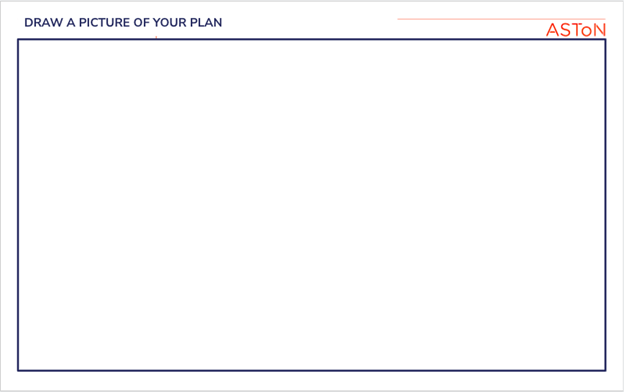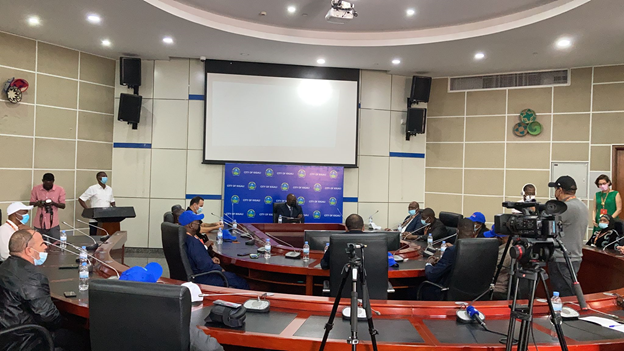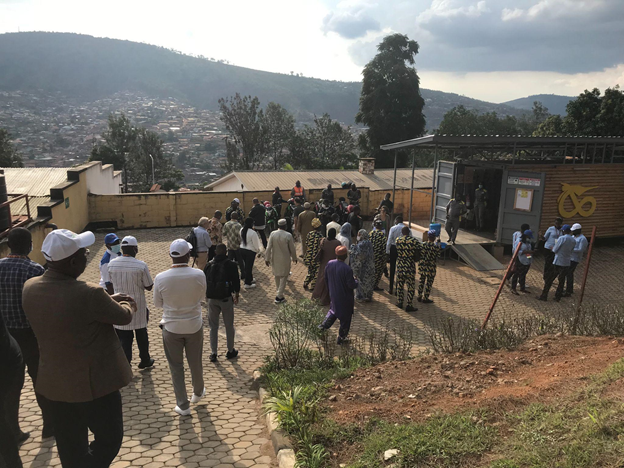ASToN city week Kigali: an in-person celebration

In November 2021, the ASToN network travelled to Kigali, Rwanda, for ASToN City Week. This network brings together representatives from 11 African cities working on digital projects to create sustainable and inclusive cities.
We were very happy to have all 11 eleven cities present despite all the odds. This is the first time we have met as a whole network since the kick off in Kampala in 2019. Since then we have been communicating online in a variety of different ways: from one on one meetings to network-wide learning events, to thematic clusters with a few cities at a time (some of which we’ve also done in person). But this was the first time for over two years that the whole network has come together to share and learn.
We saw the week as a great opportunity to build relationships, discuss our different projects and experiences, and talk about the final stages of the ASToN project.
Now that the dust has settled and we are back home in our respective cities, we’ve reflected on some key takeaways from the magnificent few days we shared together. Here are three headline takeaways:
1. Peer-to-peer exchange is a powerful model, even more so in-person
ASToN City Week gave cities the opportunity to catch up with the diverse group and present their work to each other, and we found lots of value from that.
For ASToN events, we always like to blend tried and tested formats with new ones. On the first day, we experimented with two new formats — a gallery walk and coaching carousel.
The gallery walk was a physical set up we created so that cities could see an overview of each other’s work and current challenges in an interesting way. Each city was given a template where they filled in text, made drawings and diagrams, and added post-it notes to present this information. These posters then spread around the outside of the room, creating an individual space for each city. The idea was that you could move along the outside of the room, like a museum exhibit, and physically walk between different cities’ updates.


The coaching carousel was a way for cities to share their current situation and solicit feedback. Cities were split into three groups, with each city team given the chance to present their work to their peers. Each city took it in turns to stand in front of the gallery wall they had filled in and used it as a kind of stage by which to speak to the wider group.
On the other side, audience members were tasked with asking questions and giving both “red” & “green” feedback. Individual delegates were also encouraged to ask questions as particular “characters”, which they were given at the start of the exercise. For example, some people were designated as Citizens, and were encouraged to think and ask questions based on what a citizen might value, i.e. they want to know how the city’s Local Action Plan plan might impact the city in the future, and how their individual concerns and desires might be met through the project. Other roles included journalist, investor and technologist.

The coaching carousel was met with lots of energy and enthusiasm, and the cities appreciated the opportunity to present to their peers, receive feedback, and make linkages between their work and others. Indeed, across the whole summit, we saw many commonalities between the cities and witnessed lots of debate and discussion, particularly around sustainability issues.
Overall, it was great to see this point on peer-learning come through for us, particularly after such a long time working on the project through the confines of Zoom.
2. If you can see it you can be it: seeing Kigali’s work and initiatives in action inspired other cities to think about theirs differently
One of the benefits of bringing everyone to a host city is that there is the chance to really understand what the local government is doing and what the digital ecosystem of the city actually looks like. For Kigali, there is much richness to share.
For example, on the first day we were hosted by the Mayor of the City of Kigali, Pudence Rubingisa, and were shown the Master Plan for the City of Kigali, as well as a presentation by the Ministry of ICT and Innovation. For the elected officials that were present amongst our delegation, it was useful to hear this perspective of how other politicians and policymakers have approached the development of Kigali.

On other days, we heard from some of the private sector partners that Rwanda has worked with, including Irembo and Citizen Portal. We know these presentations are useful for cities as they provide examples of what’s possible, and often show them that the solution they want to build is already out there.
Another way they may be useful is by offering examples for how governments — both national or local — can operate models that provide a win-win for the private sector, such as Build-Operate-Transfer (BOT) or other Public-Private-Partnership ventures. Irembo is engaged in a BOT contract with the national government of Rwanda to provide over 100 services to citizens via the digital portal Irembo Gov, from which they take a small commission from each transaction.
Finally, being in Kigali allowed us to see some of the cutting edge innovation that the Rwandan capital is home to. On Friday, for example, we met with a team from Ampersand, a company who we have spoken a lot about within the network. Ampersand very recently received funding of $9 million but only a few years ago it had barely started moving. For cities who are starting to experiment with their own solutions, some of the messages that Ampersand were sharing really resonated: start small, validate your model, then look to scale up.

What’s more, we also got to ride some of the electric motorbikes! We were wowed by how quiet and smooth they are, and had a real sense that we were looking at the future of mobility. From the policy side, the government of Rwanda has set a goal to replace all petrol motorbikes by 2025, so this might come sooner rather than later.
The whole team at the City of Kigali treated us with open arms, and it was a pleasure not only to be treated to their hospitality, but also to understand a bit more of some of the projects that have happened in Kigali in recent years. There is much to be learned and admired from these initiatives, and the cities definitely appreciated this other perspective.
3. There are lots of ideas about the end of ASToN, and a bit of trepidation
One of the things we really wanted to speak about as a network was the future, specifically, the end of ASToN, as we are officially wrapping up the project in the first half of 2022.
We held a co-design session with the network to answer some crucial questions for the end of ASToN. We proposed these questions, and gave each participant time to think of some ideas. Those questions were:
- How might we deepen our knowledge as a network over the next 6 months?
- How might we mark the end of the project in the best possible way?
- How might we make the results of ASToN visible, concrete, and useful?
- We can’t finish the ASToN project without …
- In the final 6 months, from the network my city needs…
- My biggest concern is…

We heard lots of ideas: whether that’s deepening our knowledge on communications together, creating a catalogue of ASToN experiments, or how we can continue to build strong links between our cities.
Overall, the cities showed a strong desire for their local activities to continue beyond ASToN, as well as the network-wide collaborations they’ve made over the past two years.
What’s next
There is lots of work to do before the end of the project. Cities are about to begin experimenting with their solution ideas in the final phase of the ASToN project, before continuing with the implementation of their plans when the project is over. Before then, they’ll be taking part in learning and reflection events, and catching up with cities who share the same implementation theme as them in expert-led cluster meetings.
The city week was very timely, because we are entering this final stage of the network, where city ideas have really started to flourish and we have a lot of experiences on which to compare.
We also know that being changemakers within local authorities is not easy, and that human connection with someone outside of Zoom — perhaps over a cocktail, a lunch, or walking around the city — can really energise you and help you feel supported in this challenging journey. So if you are in the field of bringing together changemakers, perhaps even city practitioners, don’t forget the power of an in-person meeting. We certainly valued our week spent together.
Article written by David Vigoureux.


